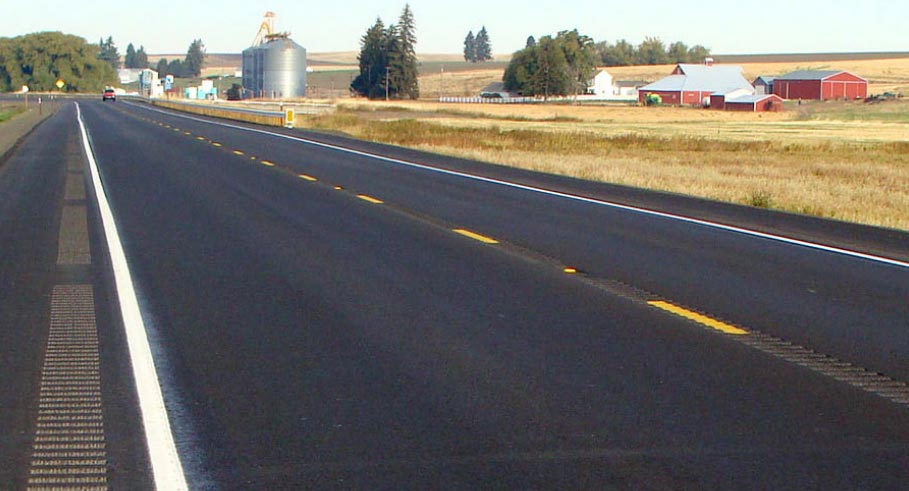 U.S. Department of Transportation
U.S. Department of Transportation
Federal Highway Administration
FHWA-SA-21-036
Longitudinal rumble strips are milled or raised elements on the pavement intended to alert drivers through vibration and sound that their vehicle has left the travel lane. They can be installed on the shoulder, edge line, or at or near the center line of an undivided roadway.
Rumble stripes are edge line or center line rumble strips where the pavement marking is placed over the rumble strip. This can increase the visibility and durability of the pavement marking during wet, nighttime conditions, and can improve the durability of the marking on roads with snowplowing operations.
With roadway departure crashes accounting for more than half of the fatal roadway crashes annually in the United States, rumble strips and stripes are designed to address these crashes by alerting distracted, drowsy, or otherwise inattentive drivers who drift from their lane. They are most effective when deployed systemically.
Transportation agencies should consider milled center line rumble strips (including in passing zone areas) and milled edge line or shoulder rumble strips with bicycle gaps for systemic safety projects, location-specific corridor safety improvements, as well as reconstruction or resurfacing projects.
Considerations
- Rumble strips are relatively low-cost, and economic analyses have indicated benefit/cost ratios that exceed 100.1
- Where rumble strips cannot be placed due to noise concerns, agencies may consider a design using an oscillating sine wave pattern (also known as ”mumble strips“) that reduces noise outside of the vehicle. However, the safety benefits of this design need more study.2
- Maintenance concerns:
- Where rumble strips are placed along a pavement joint, there are typically no issues with joint stability if the pavement structure and joint was already in good condition.
- Studies have shown no evidence of issues related to snow, ice, or rain build-up in the rumble strip.3

Shoulder rumble strips and center line rumble stripes are installed on this roadway.
Source: FHWA
Sources
1. Himes, S., and McGee, H. Decision Support Guide for the Installation of Shoulder and Center Line Rumble Strips on Non-Freeways. FHWA-SA-16-115, (2016).
2. Bedsole et al. Did You Hear That? Public Roads Magazine, Volume 80, No. 4. FHWA Publication No. FHWA-HRT-17-002, (2017).
3. NCHRP Synthesis 339: Centerline Rumble Strips – A Synthesis of Highway Practices, (2005).
4. (CMF ID: 3358, 3356, 3425, 3648) NCHRP Report 641: Guidance for the Design and Application of Shoulder and Centerline Rumble Strips, (2009).

